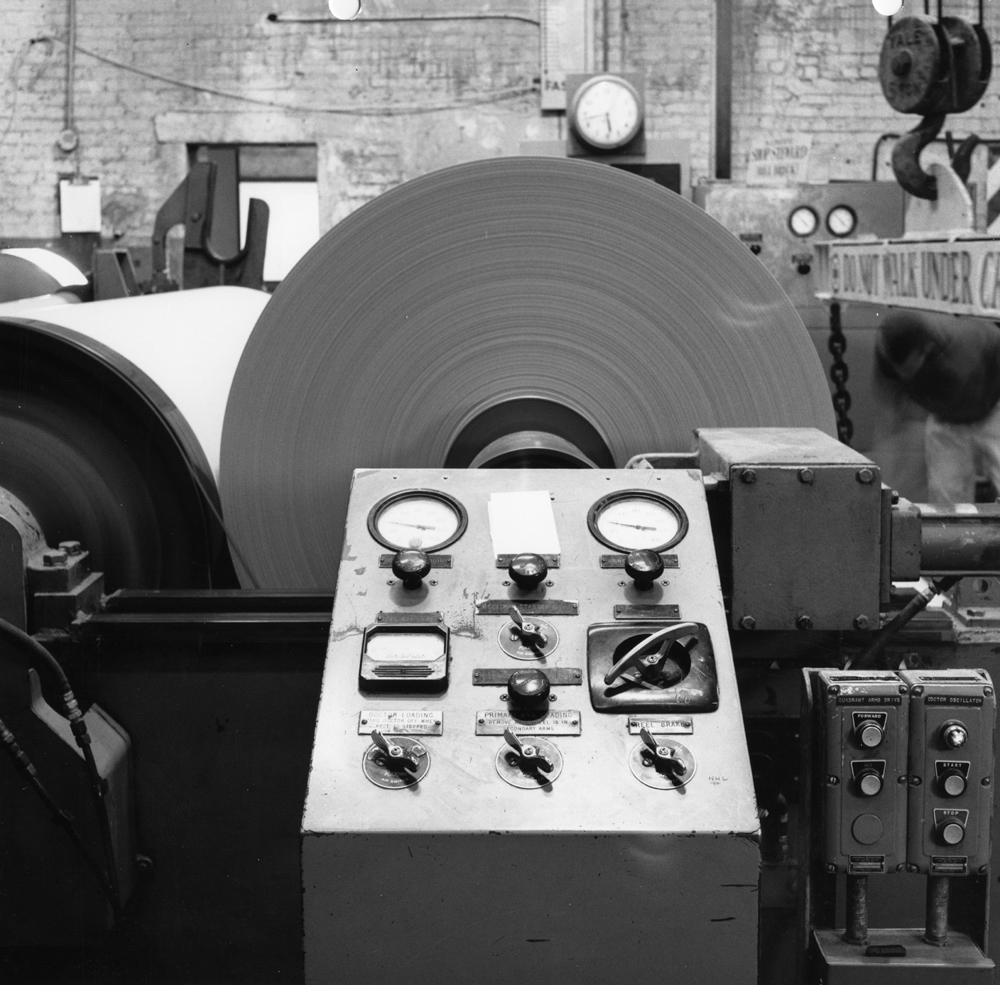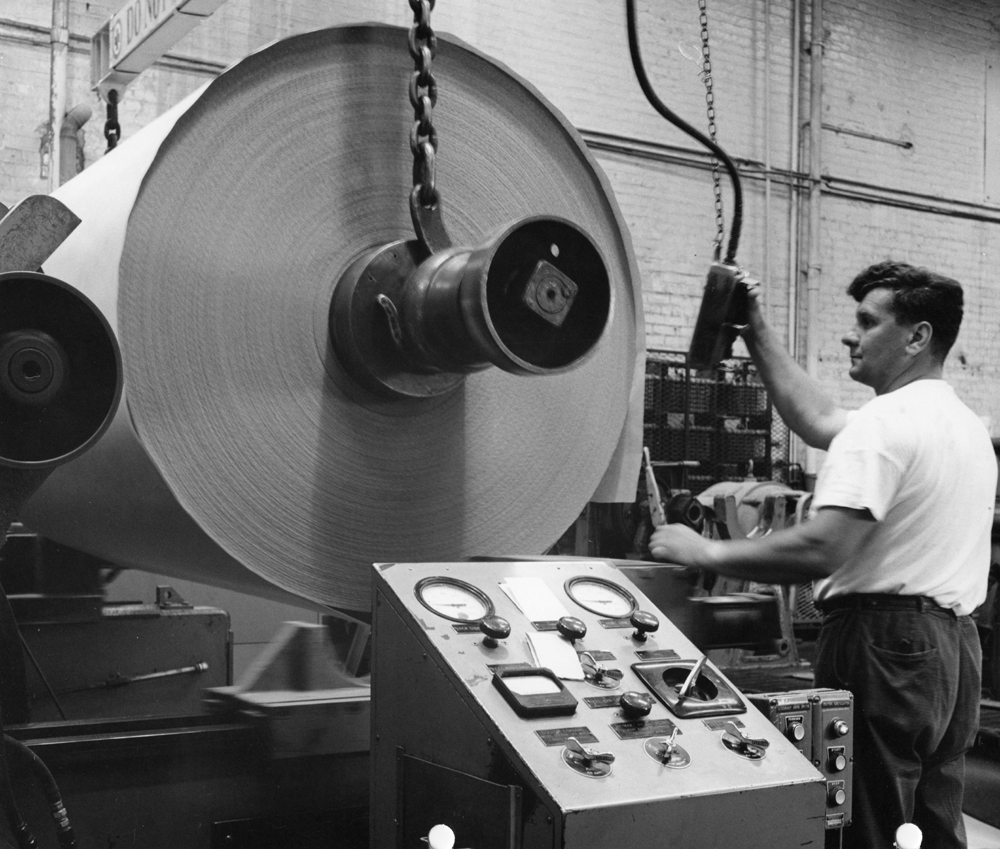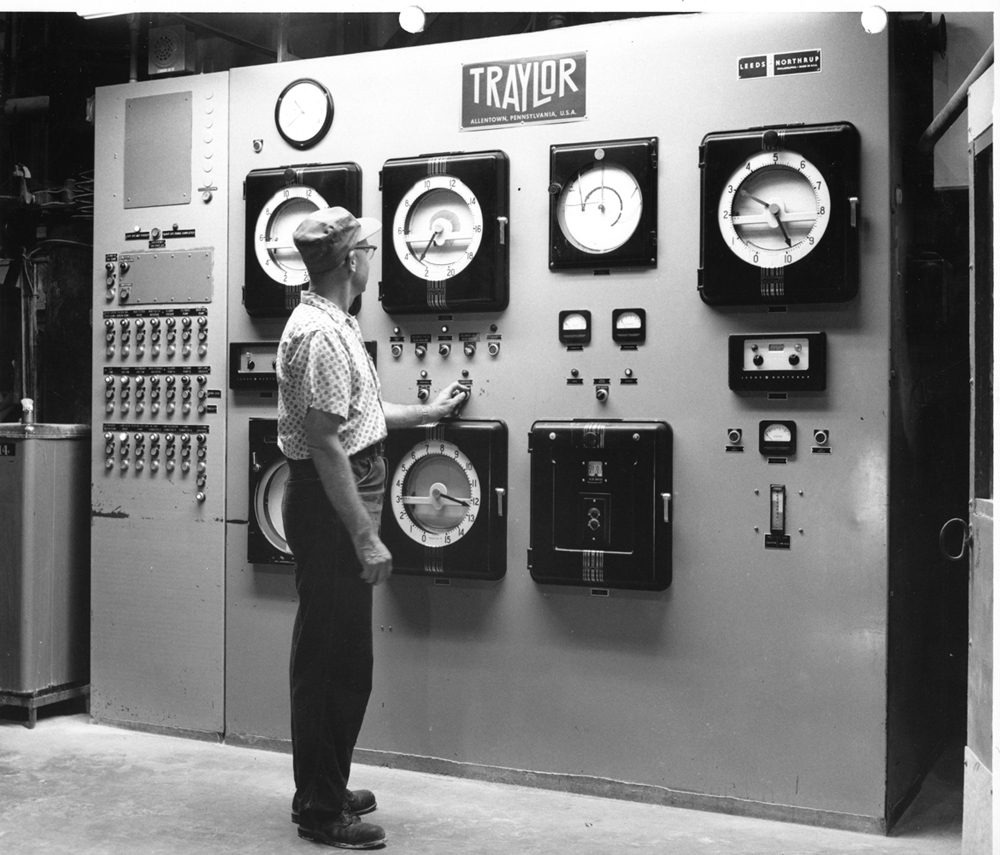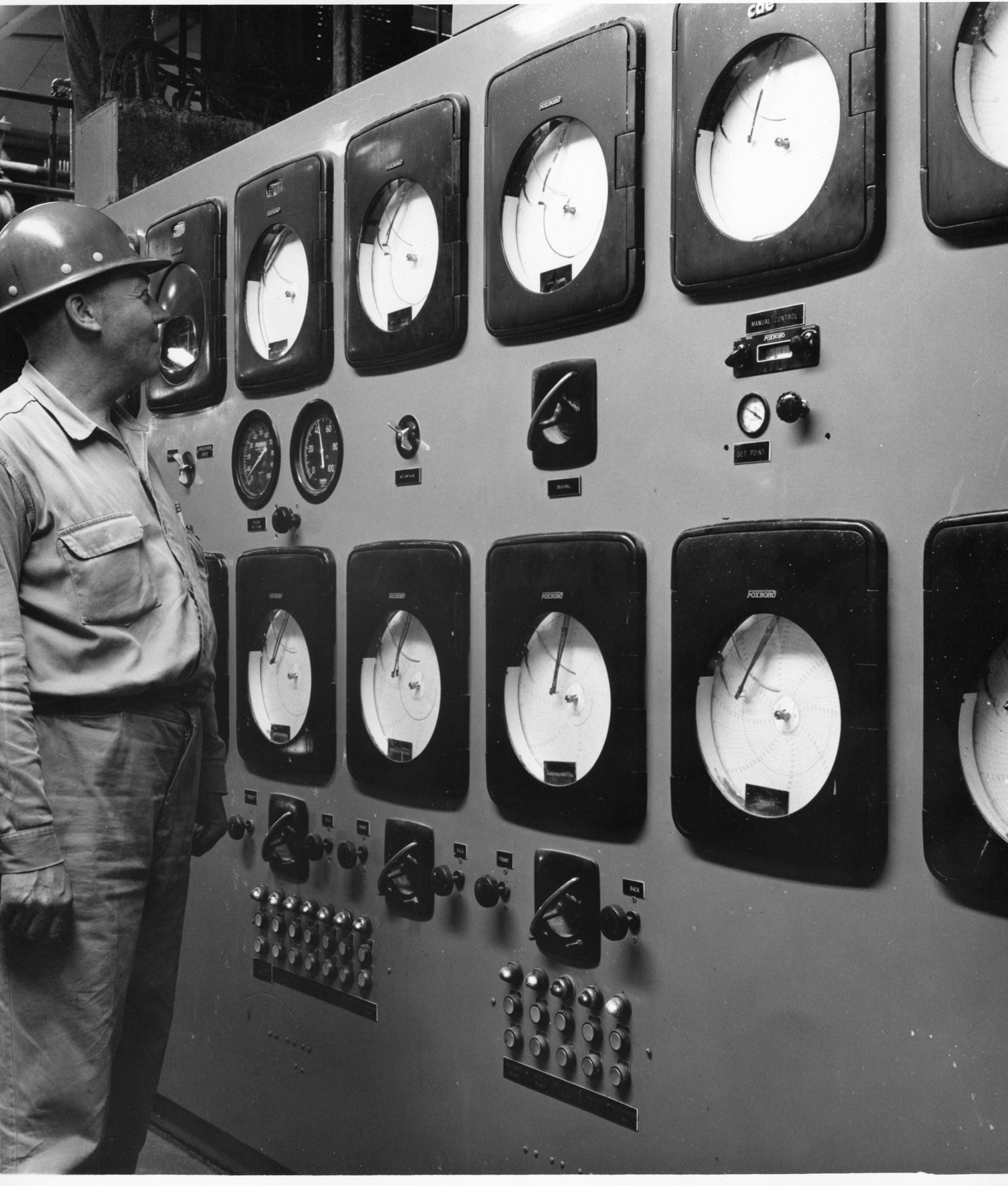Years ago, the paper making industry involved chemical and physical processes that were hazardous to the environment, dangerous to the worker and not well understood. Today, modern instrumentation and advanced computer systems monitor and control every aspect of paper production.
Long time mill employee, Charlie Rankin, who started working at the mill in 1941, has some interesting anecdotes concerning the methods that were used in the production of pulp and paper. First of all, there was no monitoring of the chemical processes. Furthermore, Charlie stated that workers would simply open a barrel of a particular chemical, which was often marked as toxic, guesstimate the amount of chemical to use and dump it into the digester. When manufacturing pulp, workers used their own judgment and were aided by very crude tests to determine the required consistency of pulp.
Don Nicholson worked at the Dryden Paper Company from 1951 until his retirement in 1990. Don spent most of his time working in the instrumentation department. This is significant because he witnessed and participated in the modernization of the instruments that control and monitor the many chemical and physical processes that occur at the paper mill.
Don Nicholson started working at the Dryden Paper Company as a manual laborer pushing a wheel barrel and pouring cement. He earned about fifty cents an hour. In October 1951, just as the weather was turning cold, he was offered an indoor job as a clerk in the engineering room. As there were numerous expansion projects at the Dryden Paper Company, Don was hired to keep track of the expenditures of each of those projects. Then in the spring of 1952 Don was hired to work in the instrumentation department where he spent the rest of his career.
When Don started working for the instrumentation department in the early 1950s, there were very few control systems. Those that did exist were found in different locations around the mill. There was no centralized control of operations as there is today. Most of the control instruments used pneumatics to send and receive control signals. There were a few hydraulic controls and even fewer electronic controls.
For example, with a pneumatic control system, a signal of three pounds per square inch (psi), might equate to a pressure of 120 pounds psi in a primary device like a boiler. The signal that controlled or monitored the pressure in a boiler might be calibrated from three psi up to fifteen psi. That would equate to a boiler pressure of 120 pounds psi up to 600 pounds psi.
However, there were many problems with pneumatic control systems. The compressed air used in the signal lines could become contaminated with water and chemical gases which corroded the internal parts of the signal line. Specifically, the controllers were mechanical devices that could break down easily. All the mechanical devices had to be calibrated correctly.
The construction of the bleach plant during the early 1950s was a harbinger of the changes to occur in the instrumentation department at the mill. The bleach plant used chlorine and chlorine dioxide to bleach pulp. The production and use of these chemicals is hazardous. Therefore for safety reasons, it was necessary to the construct control rooms that were not onsite but rather away from where the reactions were occurring.
This meant running signal lines from the floor (primary device) up to the control room and back. One of the problems that occurred while constructing and testing new signal lines was maintaining communication between the person in the control room and the person on the primary device. There were no radios and no phones. If someone discovered a fault on the floor he had no immediate means of contacting the control room. Communication was especially difficult if the workers were in the bleach plant where they were wearing gas masks.
So many problems could arise in the signal line between the primary device and the control room. The signal lines were either plastic or copper. In the bleach plant the lines had to be plastic due to the corrosive nature of chlorine gas. A spark from a welder working on copper cabling could melt the plastic cabling used as a signal line. Or the heat from a light bulb could melt the plastic lining of a signal line causing a leak. A malfunctioning pump could also create problems. As previously mentioned, communication problems existed between those trying to locate the fault and those in the control room.
Eventually, when all those problems were solved, there were centralized control rooms. For example, an instrument located on the fourth floor could control the flow of stock, steam pressure, and temperature of a chemical reaction located on the bottom floor or in a different building.
The flow of stock from the digester to the bleach plant was also controlled by instrumentation. The new steam plants produced steam at 600 psi. This required pressure reducing stations that brought the pressure down to 135 psi as needed in certain operations.
Pulp is bleached in a 5 stage process. The main chemicals used are chlorine dioxide and chlorine. As stock arrives at the bleach plant it goes into a chlorination tower where it is exposed to chlorine gas. Then it is pumped into a caustic tower where the bleaching process is stopped. Next, it passes into a chlorine dioxide tower where the bleaching process is continued. These steps occur in five stages. Today, this entire process is controlled by instrumentation.
Control Panel for Number 1 paper machine

Control Panel in the Bleach Plant

Control Panel on Number 4 paper machine. Look at the size of the reel of paper

Control Panel on Lime Kiln. This control panel is located on site. Today, there are centralized control rooms that are away from the primary device

Control Panel for Number 1 Paper machine
